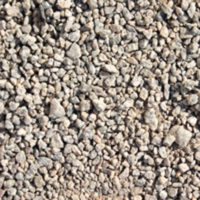 Approximately 1.7 million people are exposed to silica dust each year, according to the National Institute for Occupational Health and Safety (NIOSH), and virtually all this exposure occurs in the workplace. About 250 people die from silica dust exposure annually, and many more are rendered disabled.
Approximately 1.7 million people are exposed to silica dust each year, according to the National Institute for Occupational Health and Safety (NIOSH), and virtually all this exposure occurs in the workplace. About 250 people die from silica dust exposure annually, and many more are rendered disabled.
If a worker’s job involves drilling, grinding, or cutting rock, or they work in an area where these activities take place, odds are they have been exposed to silica dust. Inhalation of silica dust can lead to development of silicosis, a potentially lethal lung disease. Because so many construction workers contract silicosis, it is also known as sandblasting disease. Besides construction workers, those most vulnerable to silicosis include:
- Agricultural workers
- Demolition workers
- Furnace installers and maintenance workers
- Foundry workers
- Masons
- Miners
- Painters
- Plumbers
- Welders
By law, employers are supposed to instruct workers whose jobs require exposure to silica dust about the dangers and must provide proper safety equipment and other safety measures.
Silicosis Symptoms
Silica dust, or silicon dioxide, occurs naturally in stones and dirt, especially quartz, clays, and granite. Inhalation of this dust creates scar tissue in the lungs. Silicosis symptoms may mimic signs of other serious lung diseases. Anyone working around silica dust should tell their doctor if they experience chronic coughing or other respiratory distress and seek medical attention. Other symptoms of silicosis include:
- Bluish tinge on ears or lips
- Chest pain
- Fatigue
- Fever
- Shortness of breath
- Unexplained weight loss
Those diagnosed with chronic silicosis suffer difficulty breathing for the rest of their lives. This type of silicosis, the most common, usually develops in people exposed to low levels of silica dust over a long period, perhaps 20 years. Accelerated silicosis occurs after heavier exposure to silica dust over five to 15 years, and is generally more severe than chronic silicosis. Acute silicosis comes on suddenly after exposure to high amounts of silica dust, and victims experience extreme breathing difficulties and low blood oxygen levels.
Silicosis raises the risk of developing bronchitis, tuberculosis, heart disease and lung cancer. Continued exposure to silica dust may impair the immune system, leading to autoimmune diseases, such as lupus or rheumatoid arthritis. While treatments are available for silicosis, there is no cure and the lung scarring is irreversible. For many silicosis patients, the only option for survival is a lung transplant.
Silica Dust Compensation
Workers diagnosed with silicosis are eligible for workers’ compensation benefits. When many workers are diagnosed with silicosis, it is possible to file a toxic exposure class action lawsuit for compensation. A lawsuit may also involve the manufacturers of silicon products and equipment, if their products or equipment did not meet federal minimum safety standards.
Cherry Hill Workers’ Compensation Lawyers at Pietras Saracino Smith & Meeks, LLP Help Workers Exposed to Silica Dust
If you or a loved one was exposed to silica dust in the workplace, you need the services of the experienced Cherry Hill workers’ compensation lawyers at Pietras Saracino Smith & Meeks, LLP. We will obtain the benefits you deserve so you can focus on your recovery. Call us at 856-761-3773 or complete an online form to schedule a free consultation today. Located in Cherry Hill, New Jersey, we provide trusted counsel to clients throughout South Jersey, including the City of Camden.






